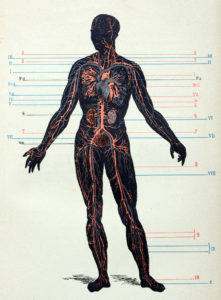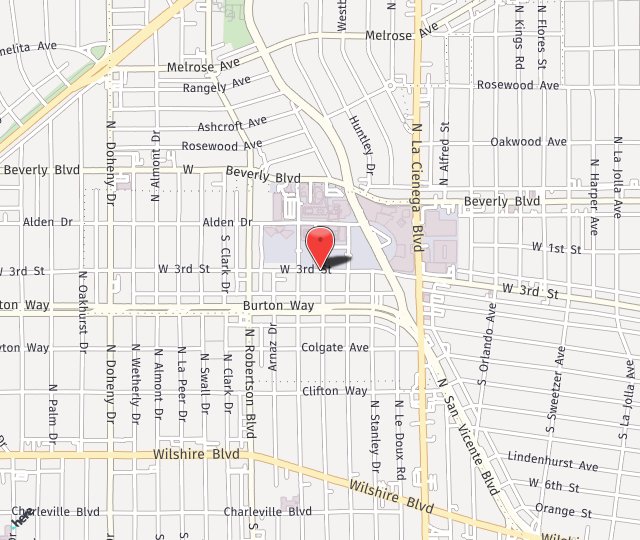Nerve Graft Surgery
in Los Angeles
What is Nerve Graft Repair?
This procedure relies on cutting out the scar tissue, called a neuroma, that fills the gap between the two free ends. After measuring the length of the gap, Nerve Graft is harvested to bridge the defect. Donor sites include the back of the calf, front of the forearm, or back of the wrist. A sensory nerve is selected from one of these areas, one that relays feeling from a non-critical area of the body.
Routinely, the graft is cut into multiple strands and stacked on top of each other to match the size of the free nerve ends, thus producing a “cable”. A cable graft relies on the nerve cells at point A (the origin) to walk across the graft and meet its partner at point B (target nerve with its muscle). A useful analogy would be building a bridge (nerve graft) across two islands. Island A (nerve origin) is populated and Island B (nerve and muscle target) is empty. Even though the bridge (graft) is constructed, we do not expect any activity on Island B (muscle function) until the cars (nerve cells) get across the bridge (graft).
Conditions That Can be Treated with a Nerve Graft
Nerve Graft procedures are useful in treating some forms of:
-
- Brachial Plexus Palsy
- Facial Paralysis
- some forms of foot drop from Peroneal Nerve Entrapment
Ideal Candidate for a Nerve Graft
In rupture-type injuries or when a nerve is cut by trauma, the nerve snaps and leaves two free ends that are no longer talking to each other. As a result, electrical signals are not crossing the nerve and telling the muscle to turn on and move. In this situation, a Nerve Graft may be a useful treatment option.
What are the benefits of Nerve Graft Surgery?
This surgery with Dr. Seruya repairs the ruptured or cut nerve. This restores feeling to the area served by the injured nerve. You could think that it would make more sense to simply reconnect the two ends of the severed nerve, but this isn’t always possible. Sometimes too much scar tissue has formed. Other times, a piece of the nerve has been cut and cannot be repaired. This would mean reconnecting the severed ends could only be done under tension, which will not work.
In these surgeries, Dr. Seruya takes a graft from a donor nerve that isn’t critical to the patient. These areas, such as the back of the lower leg that serves part of the foot, won’t suffer from a small area of numbness. Even these areas can sometimes heal themselves with time.
These are the advantages of using a nerve graft from the patient’s own body rather than using allograft material:
-
- Simple, easy, and safe to obtain the donor nerve material
- Easy to suture to the injured nerve
- No risk of rejection
- Provides a good environment for nerve regeneration
Preparing for your Nerve Graft Surgery
You’ll stop taking any anti-inflammatory medications, blood-thinning drugs, and various supplements one week before your surgery. If you smoke, you’ll need to stop for at least two weeks prior to and after your procedure, as smoking inhibits healing and decreases circulation.
The main preparation is to understand that you will lose feeling and possibly a bit of function in the area served by the donor’s nerve.
How is a Nerve Graft Surgery performed?
First, you will work with Dr. Seruya to decide on the location of the donor’s nerve. These are commonly the sural nerve (midline in the lower leg), the superficial radial sensory nerve (inside on the forearm), and the medial antebrachial cutaneous nerve (inside of the upper arm).
During this surgery, Dr. Seruya exposes the severed nerve. Then the donor’s nerve is exposed. Next, an appropriate section, about 25 percent longer than the actual repair length, is removed from the donor’s nerve.
Using the microsurgical technique, Dr. Seruya then sutures the graft into place, reconnecting the severed nerve. Sometimes the nerve stump is much larger in diameter than the graft nerve material. In these cases, two or more sections of the graft may be sutured into place side-by-side. The incisions are closed, and the procedure is complete.
What to expect after Nerve Graft Surgery
Nerve Graft surgery is performed under general anesthesia and can last several hours. After surgery, the operative area is wrapped in a

How long is the recovery for a Nerve Graft?
Patients will be followed closely by occupational therapists, who will use electrical stimulation to gently help the nerves turn back on. The movement of nerve cells across the graft occurs at 1 mm per day, thus it can take 6-12 months for the injured nerve to recover and turn on its target muscle. The areas farthest from the nerve source in the spinal cord, take the longest to recover whereas the areas closest to the spinal cord recover first.
Are the results of a Nerve Graft permanent?
These grafted nerves don’t continue to use the donor material. It simply serves as a conduit along which regenerating sensory nerve fibers can grow. Nerves regenerate at the rate of about one inch per month. Once these fibers regenerate, your repaired nerve should function normally for the rest of your life, barring repeat injury.
Patients will have some numbness in the area of the donor’s nerve, but it typically doesn’t create any problems. There is no need for future pain medication for these sites.
The risks involved with a Nerve Graft
The main risk is that the nerve graft will not successfully take in the new location. Various factors can affect the success or failure of a nerve graft:
- Time since injury — The earlier the nerve is repaired after the injury the better the success rates of the grafting procedure.
- Type and extent of the injury — The less trauma to the nerve, the more confined the injury, and the shorter the required graft, the higher the success rates.
- Vascularity of the area — For a nerve graft to be successful, it must be revascularized quickly. Nerve grafts placed in areas that are exposed to adjacent healthy soft tissues, rather than bony areas, have better success.
- Lack of tension — Nerves need to be repaired without any tension on the nerve segments. Because harvested nerve grafts shrink by approximately 20 percent, the nerve graft should be 25 percent longer than the host nerve defect to compensate for the shortening.
- Patient age — Young children have the best results, while elderly patients have the poorest graft success rates.
The patient will also have numbness in the area originally served by the donor’s nerve. This is not a risk; it is a fact. Dr. Seruya can, in effect, “demo” this sensation by administering a temporary nerve block to the donor’s nerve. This will give the patient an idea of what their postoperative deficit would be.
Otherwise, risks involved with nerve grafts are the same as with any surgery: excessive bleeding, infection, reaction to anesthesia, and poor incision healing. These are rare.
Patient Testimonial
“I am so grateful to have found Dr. Seruya, who performed a sural nerve graft surgery on my left leg/foot in May 2019. Having seen dozens and dozens of Doctors and Surgeons over the past ten years, finally found a surgeon who provided me with some solutions to a nerve problem that has plagued me for 10 years.
Dr. Seruya is very compassionate and has excellent bedside manners. He takes the time to explain the surgical process to the patient and I appreciated that very much. In addition, Dr. Seruya provided me with photos of the surgical procedure, which helped me, as the patient, understand the surgical process and what was completed to reconnect my nerve. While I’m still in the healing process of this surgery, I feel confident that his skilled expertise in nerve reconstruction will provide me relief once the nerve endings reconnect in the next year.
I would highly recommend Dr. Seruya for the treatment of nerve-related injuries as he will provide solutions that were never considered by other Doctors. Thank you Dr. Seruya for your care, understanding, and problem-solving!”
Schedule Your Consultation Today
If you’re interested in learning more about nerve graft surgery please contact us for a consultation at 310.423.2129 or fill out our contact us form below. We will discuss your needs and concerns, and determine your best course of action.


